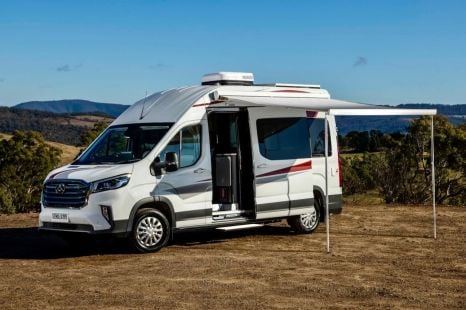

Ben Zachariah
2026 LDV Deliver 9 campervan released with sharp pricing
3 Hours Ago

News Editor
Mazda still offers a wide range of passenger cars in 2023 – it hasn’t gone SUV- and ute-only like Mitsubishi – but it’s telling that its new Large Architecture is spawning four SUVs, of which three have been confirmed for Australia.
Read Part I here.
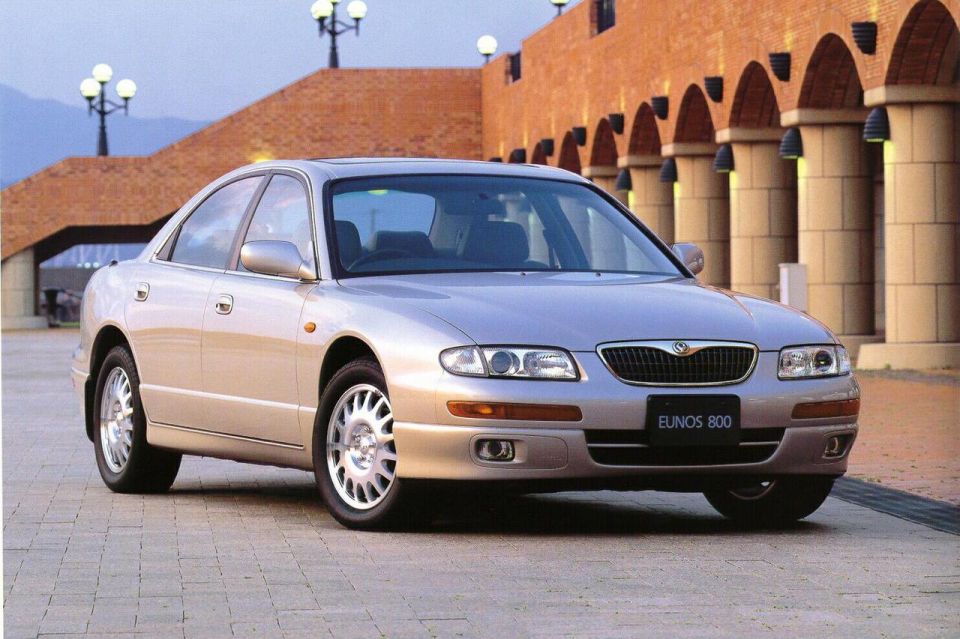
Rewind to the 1990s, and Mazda didn’t have surplus SUVs but, rather, overlapping coupe and sedan models. This was the decade that saw Mazda’s last serious premium push with the rollout of a standalone brand called Eunos… which was subsequently rolled back in.
Mazda had overextended itself and had to course-correct, something it had a laser focus on after Ford took a controlling stake in 1996. Excitement didn’t die at Mazda, and the new century would see a new rotary-powered flagship and the continuation of the iconic MX-5, while even its more mass-market cars were infused with what the brand had coined “Zoom-Zoom”.
Nevertheless, the 1990s was one of the more fascinating decades in Mazda’s history as it rolled out four-wheel steering, superchargers, and tiny V6 engines.
There have been a surprising number of hatchback models offered in Australia over the years with folding canvas roof panels, ranging from the budget Daewoo Nubira up to the premium BMW 3 Series Compact. But a sedan with a canvas roof?

Mazda had offered a canvas-roof version of its 121 hatchback throughout its run, called the Funtop. With the boxy hatchback making way for a pert sedan for 1990, the open-air version disappeared. It would return, however, for 1993.
Just 300 models were offered in 1993, and they came fully loaded. That included not only the (power) sunroof, but also front power windows and mirrors, central locking and alloy wheels.
It used the same naturally aspirated 1.3-litre four-cylinder engine as the rest of the 121 line-up, producing 55kW of power and 106Nm of torque and offered with either a five-speed manual or four-speed automatic transmission.

The manual was priced at $19,310 and the auto at $20,635, representing a hefty premium of around $2300 on the regular car. Said model missed out on the Funtop’s extra features, but the special edition model’s pricing put it right up against a larger, more comfortable 323 sedan.
That said, the 323 didn’t have a giant hole in the roof…
Hardtop is a term that traditionally meant a coupe or sedan without a B-pillar, allowing for an airier cabin and a more stylish profile. American brands embraced this body style in the 1950s, but by the 1970s these were starting to disappear.

In the 1980s, the Japanese took the hardtop baton, though by this point most of these vehicles featured a B-pillar. The definition had therefore shifted to a two-door coupe or four-door sedan with a sleeker roofline and frameless windows, typically sold alongside a related sedan with a more conventional roofline.
Few of these hardtops came here, though Mazda notably sold both sedan and hardtop versions of its 1987 HC-series 929. Cars like the Mazda Persona, Nissan Presea and Toyota Carina ED, however, were kept as largely Japanese market-only models. Hell, even the Toyota Camry came with a hardtop body in Japan.
It was perhaps a surprise when Mazda chose to introduce the slinky Lantis to Australia in 1994 as the 323 Astina Hardtop. The company already had a 323 sedan in the Protege, while the popular first-generation 323 Astina hatch was also replaced by a rebadged Lantis hatch with a swoopy, wedge-shaped body.

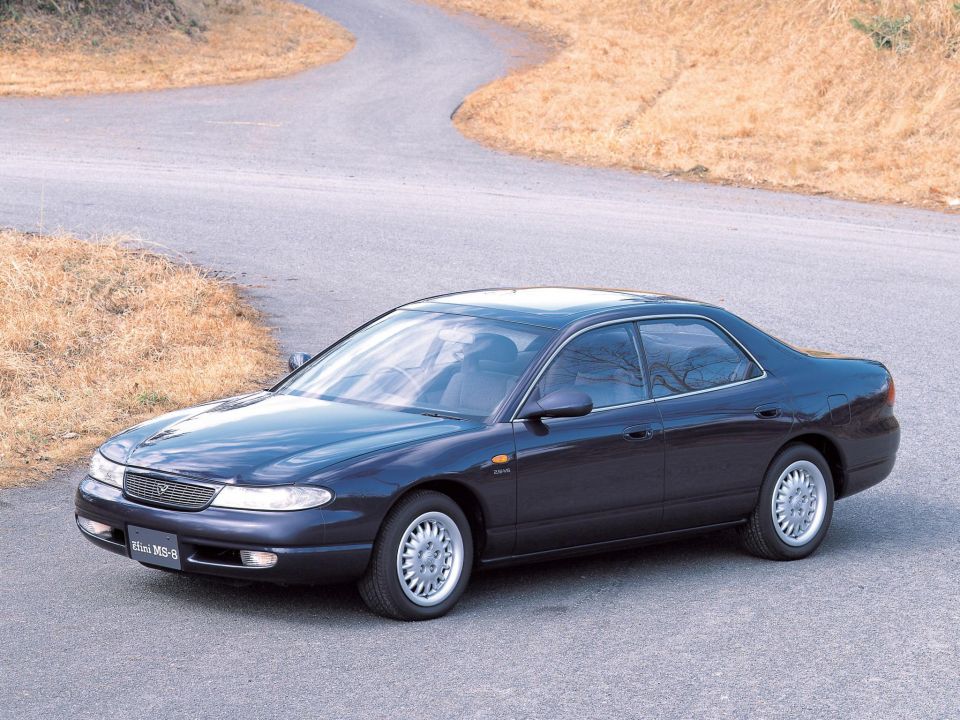

Mercedes-Benz is sometimes credited as offering the first four-door coupe but the 323 Astina Hardtop was arguably just as worthy of such an appellation and debuted 11 years before the CLS (and technically, a version of the Rover P5 was marketed as a four-door coupe all the way back in 1962).
Mazda had no shortage of pretty, curvaceous sedans in the 1990s.
There was the sleek Eunos 500, while the 929/Sentia was a long and graceful limousine akin to a Japanese Jaguar. The Autozam Clef was a slipperier if somewhat more aquatic take on the Mazda 626, while the Efini MS-8 was a curious hybrid of Japanese and American design cues.

The 323 Astina shared a platform with the aforementioned Eunos 500, which at this point was being marketed as belonging to a separate brand with separate showrooms.
At 4490mm long and 1695mm wide, the 323 Astina Hardtop was 55mm shorter than the 500 and similar in size to the previous-generation 626; it was also 155mm longer than the more affordable 323 Protege.
Mazda’s designers thoroughly differentiated the hardtop from the hatchback, with both models even featuring their own front-end styling; the hardtop had softer styling, with more of a wraparound look to its headlights. There was a B-pillar, but the Hardtop did feature frameless windows.
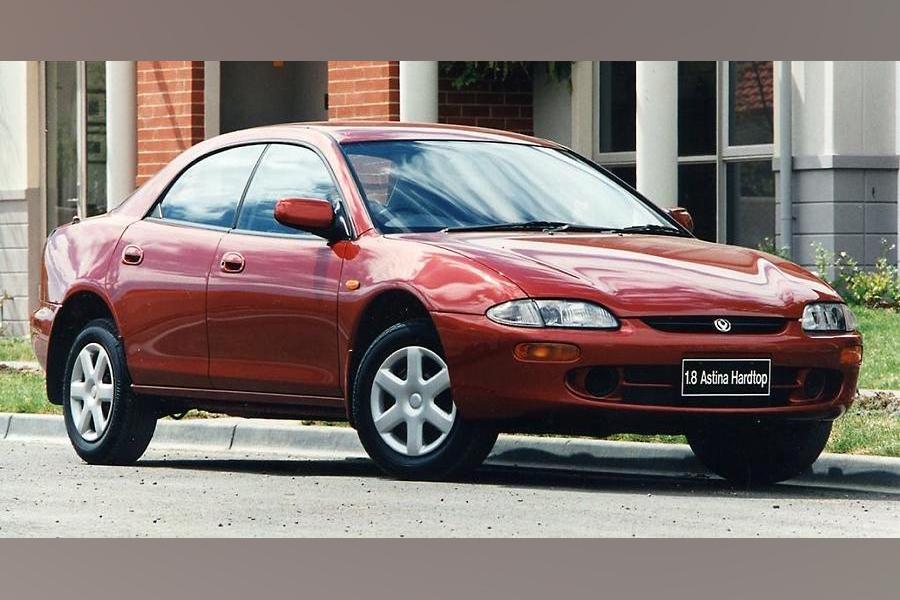
Like the 500, it also offered a naturally aspirated double overhead cam 2.0-litre V6 engine; this produced 104kW at 6000rpm and 183Nm at 5000rpm.
Some of the Japanese brands had been experimenting with small-displacement V6s; Mazda had an even smaller 1.8-litre V6 in the Eunos 30X (aka Mazda MX-3), while Mitsubishi put a 1.6-litre V6 in the Japanese-market Lancer.
Unlike the 500, the Astina was also offered with a naturally aspirated 1.8-litre four-cylinder engine with 92kW at 6000rpm and 160Nm at 4000rpm; this was carried over from the previous-generation Astina.

Both engines were offered with five-speed manual and four-speed automatic transmissions, though there were differences in suspension between the two, chiefly the anti-roll bars and damper rates.
The Astina’s V6 liked to be revved and was a smooth unit, though it lacked much in the way of low-end torque. Nevertheless, critics largely agreed this was a thoroughly enjoyable car to drive, with sharp handling and steering, though it wasn’t the last word in packaging efficiency – like the hatchback, a rakish roofline ate into headroom.
Mazda only projected 10 per cent of overall 323 sales would be of the Hardtop, with 40 per cent projected to be of the more conservative Protege sedan. Mazda also kept the previous-generation 323 sedan around as a price leader model until 1996, though we missed out on two different three-door hatchback bodies offered overseas.

It’s unclear whether that 10 per cent figure proved accurate, though we suspect it did.
The 323 Astina was unique in offering a V6 in this segment in Australia, and the Hardtop was even more unique in featuring such a sleek four-door coupe body. The next generation of 323 was still a good car, but Mazda had rationalised its line-up after overextending itself earlier in the 1990s.
There would still be an Astina, but it was merely a hatchback version of the new Protege, and no V6 was available. The Eunos 500 also disappeared around this time, leaving buyers looking for a small-to-medium, curvaceous Mazda with a sweet little V6 with no options.
The Eunos 800 was supposed to be the middle child of the Amati line-up, a standalone luxury brand from Mazda to rival Toyota’s Lexus and Nissan’s Infiniti.

But after announcing the new brand in 1991 and spending hundreds of millions of dollars on its launch, the economic crisis in Japan led Mazda to terminate Amati in 1992 around two years before its planned launch. The flagship, 12-cylinder Amati 1000 was stillborn.
Mazda had rolled out a range of marques in Japan, comprising Eunos, Efini and Autozam, to rival Toyota’s separate dealer networks. Eunos made the trip to Australia in 1992 – you can read more about the history of Eunos here, and the scuttled Amati brand here.
The mid-range Amati ended up being launched instead as the Mazda Millenia in North America, the Mazda Xedos 9 in Europe, and the Eunos 800 in Australia.

By 1996, Mazda had dropped any pretence of Eunos being a separate brand and the Eunos 800 became the Mazda Eunos 800. The final generation of 929 had proved a flop and was promptly discontinued, leaving the 800 without an in-house rival.
Though the Eunos 800 was front-wheel drive and not rear-wheel drive, it was arguably the more dynamic of the two models and evidently Mazda saw an opportunity to create a sporty special edition to drum up interest.
With just 30 examples produced, the 800 SP proved to be the rarest example of the Eunos 800 in Australia, not exactly a volume seller with just 1164 examples sold between 1994 and 2000.
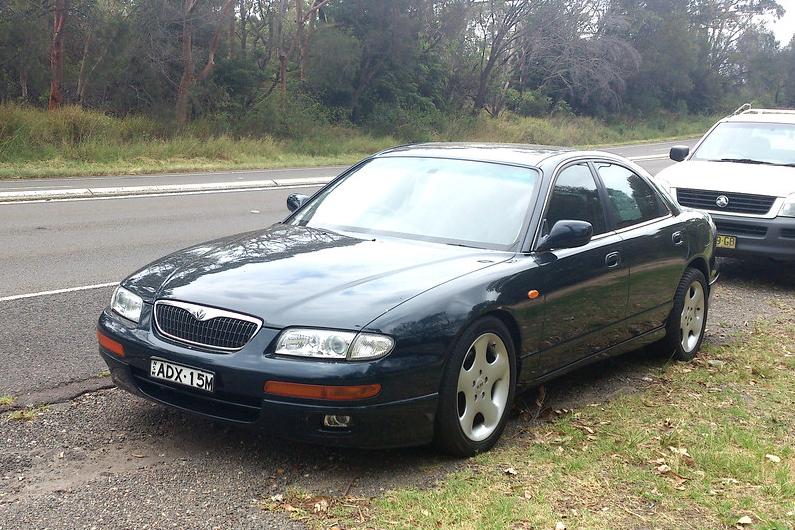
Launched in 1998, the SP was developed in Sydney by the company’s Motorsports division. It featured Eibach springs, and sat 25mm lower than the standard 800M. Striking 17-inch Italian Antera wheels sat in Pirelli P600 235/45ZR17 tyres.
There was also a range of cosmetic tweaks: a unique grille, a numbered badge, and stainless steel sill plates.
Unchanged was the standard 800M’s 2.3-litre supercharged Miller cycle double-overhead cam V6, which produced 149kW of power at 5500rpm and 282Nm of torque at 4000rpm. It was mated exclusively with a four-speed automatic transmission.

Mazda claimed this engine – which slotted above a naturally aspirated 122kW/215Nm 2.5-litre V6 until this base engine was discontinued in 1998 – offered the power of a 3.3-litre six-cylinder engine with the fuel consumption of a 2.0-litre four-cylinder. 800 models with this engine also received four-wheel steering.
Being based on the 800M, there was a wide range of standard equipment including a sunroof, leather upholstery, power-adjustable front seats, climate control, and a six-stacker CD player.
The SP retailed for $79,900 before on-road costs, $7290 more than the standard 800M, and equivalent to over $150,000 in today’s money. That’s considerably more expensive than even the top-spec Mazda CX-90, the standard bearer of Mazda’s latest premium push.
This one stung.
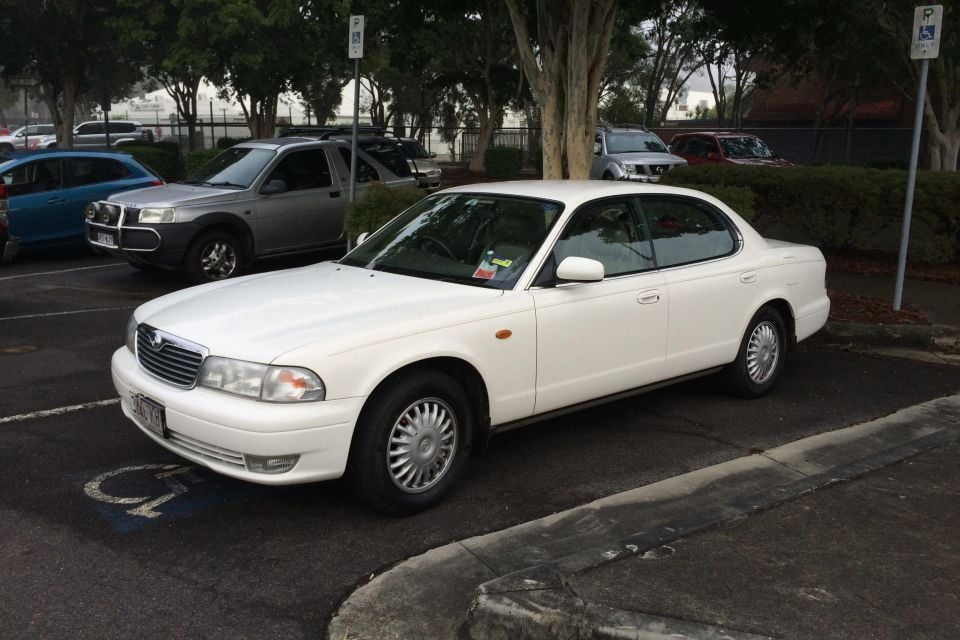
The HE-series Mazda 929, introduced here in 1996, wasn’t an entirely unattractive car. It was typical mid-1990s Japanese bland, with an upright roofline and squared-off front and rear ends. There was an even faintly American look to it, such that a Buick or Mercury badge wouldn’t have looked out of place.
Against a contemporary Lexus ES or Honda Legend, it was scarcely more conservative. So why does this unassuming Japanese luxury sedan engender such an emotional reaction?
Well, just look at what came before it. The 1991 929, known as the Sentia in Japan, was about as close to a Japanese Jaguar as you could get. It was low and sleek, with gorgeous curves and elegant rear-wheel drive proportions.
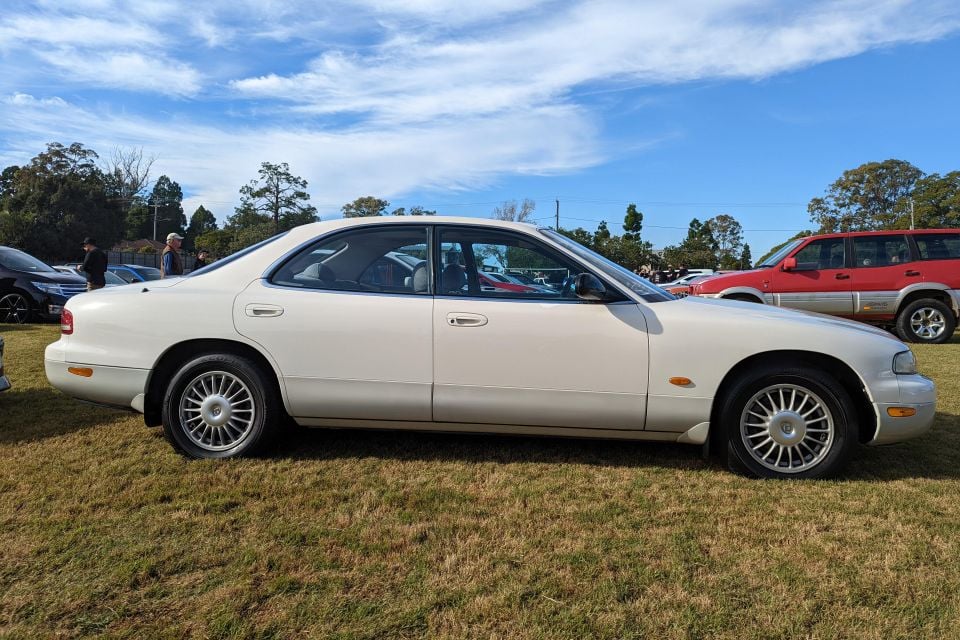
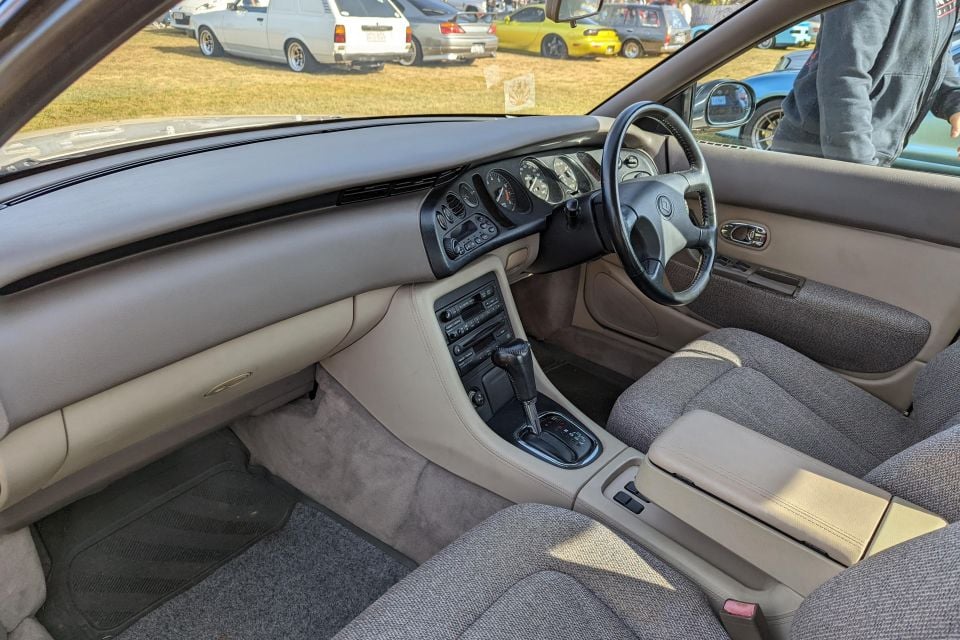
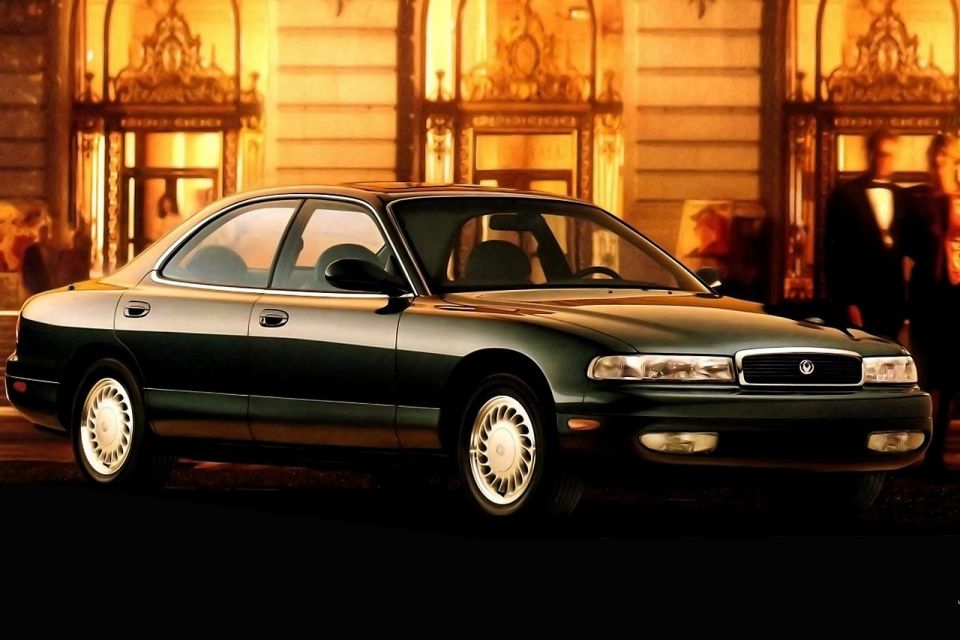
Unfortunately, the market responded tepidly to the svelte sedan. After relatively strong initial sales in Japan, demand tapered off. Hagerty reports more than 43,000 929/Sentia sedans were sold in Japan and North America in 1991 and 1992, but by 1994 that number had sunk to just 9560.
Mazda in the US chose to discontinue the 929 in 1995, focusing instead on the front-wheel drive MIllenia that was similar in size and price. That left the Japanese market as a priority for Mazda, where 929 owners were more likely to be chauffeur-driven and where, therefore, the sleek roofline of the outgoing model was a liability.
Much as Honda did with its third-generation Legend, which similarly went from sleek to boxy, Mazda gave the 929 a more conservative redesign. It sat on the same floorpan as the outgoing model, but Mazda raised the roofline by 40mm and extended it by 120mm.
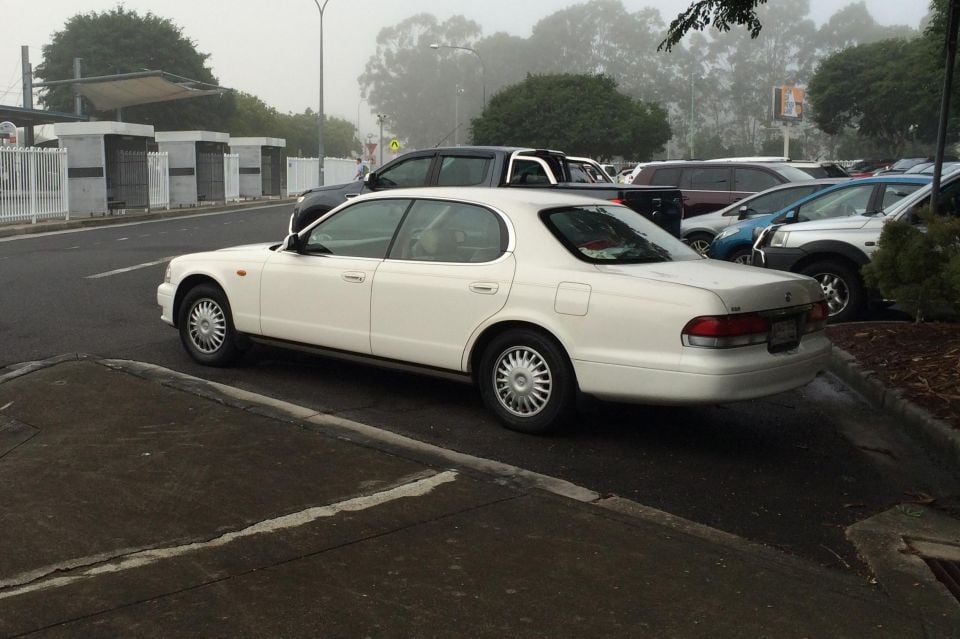
Overall, the car was 25mm shorter at 4895mm; 25mm taller at 1420mm; and 3mm wider at 1795mm, which meant it still fell afoul of width-based tax regulations in Japan.
Luggage capacity was up by around 100L to 486L, though it had an interminably high loading lip.
The conservative redesign wasn’t just limited to the exterior. Inside, the sleek, contemporary dashboard was replaced with a more starchy, upright unit, and Mazda applied woodgrain trim liberally.
In all, the HE-series 929 didn’t look any newer than the model it replaced, and in fact it looked closer to that model’s predecessor – almost as though this was some stage of evolution that had happened out of sequence.


Mazda had been doing this since the LA4-series 929 that arrived here in 1978. It would launch a particularly upright, conservative-looking generation, then replace it with something more avant garde and dynamic-looking, and then back again. Rinse, repeat.
Leaked photos of the aborted V12-powered Amati 1000, published in 1992, revealed styling for the flagship model of Mazda’s luxury spinoff brand was at least superficially similar to the eventual HE-series 929. Said Amati flagship was also reportedly set to use a version of the 929’s platform, so the conservative HE-series was therefore the closest we got to receiving Mazda’s Lexus LS400 rival.
Of course, there was no V12 under the bonnet. Instead, the 929 used a carryover double-overhead cam 3.0-litre V6 producing 138kW of power at 6000rpm and 270Nm of torque at 3500rpm.
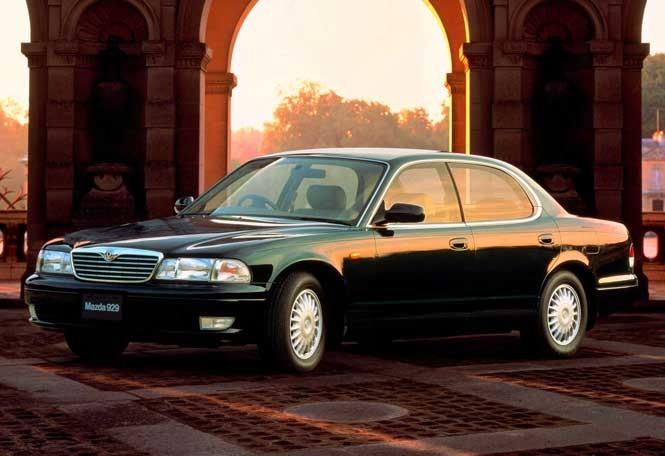
Outputs and peaks were identical to the previous 929, though Mazda said it had improved low-to-mid-range torque. Still, these outputs were merely adequate for something with a kerb weight of 1620kg, and the official 0-100km/h claim was a stately 10.2 seconds.
While the styling might have suggested the 929 had been softened dynamically, this wasn’t the case. Contemporary reviews found the cabin to be quieter and the ride still particularly plush, but the steering was said to be more direct and the car modestly more responsive overall.
Four-wheel steering remained standard. At low speeds, the rear wheels could turn by up to five degrees in the opposite direction to the front wheels, which helped keep the turning circle at a rather tight 10m. At high speeds, the rear wheels turned in the same direction as those up front for greater stability. The 929 also featured speed-sensitive power steering.
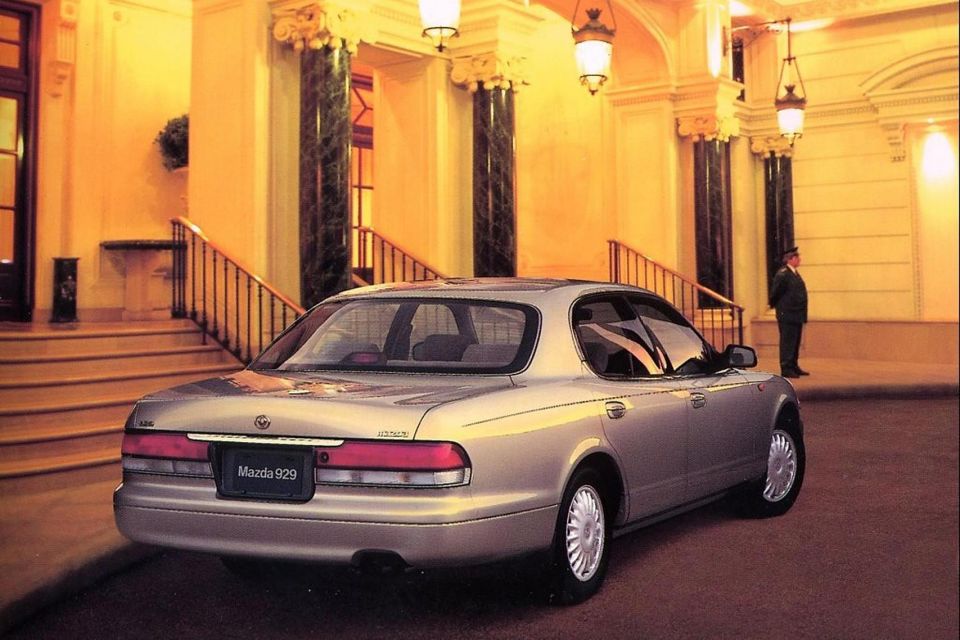
The 929 was available in a single variant, priced at $79,300 before on-road costs, or $1850 cheaper than its predecessor. New to the equipment list was a passenger airbag and controls for the rear passengers to adjust the front seats.
Other standard equipment also included leather upholstery, power-adjustable front seats, 15-inch alloy wheels in Dunlop SP Sport tyres, and a boot-mounted six-CD changer. Mazda did delete some features, likely in the name of cost-cutting, with rear air vents among those items removed.
Its pricing put it directly between the base Eunos 800 ($73,855) and the supercharged 800M ($85,615), and pitted it against the likes of the BMW 523i, Saab 9000 Griffin and Volvo 960.
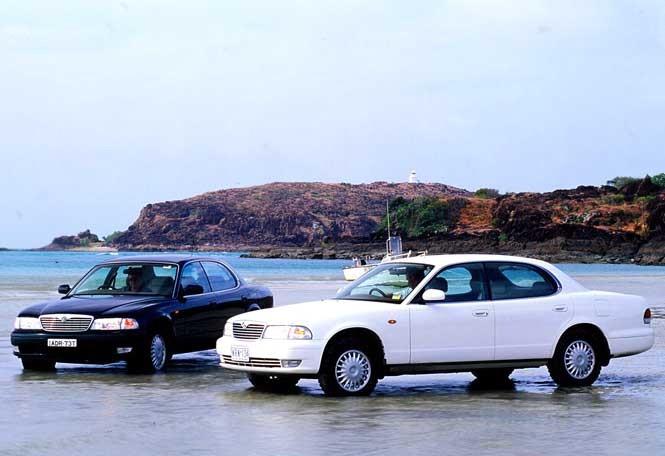
The 929 had a lower price than the $88,350 Honda Legend which, despite its front-wheel drive layout, was arguably the Mazda’s most direct rival being a large luxury sedan from a mass-market Japanese brand. But the Legend sold considerably better than the 929.
The 929’s decline in Australia had been precipitous. Mazda sold 1103 examples in 1991, dropping to 710 in 1992 and then continuing to decline each year, not helped by regular price increases due to a poor exchange rate.
In 1996, just 69 left local showrooms. It’s unclear how many of those were of the HE’s predecessor, but in 1997 sales of the 929 dropped to just 46; Honda, in contrast, sold 198 Legends that year.
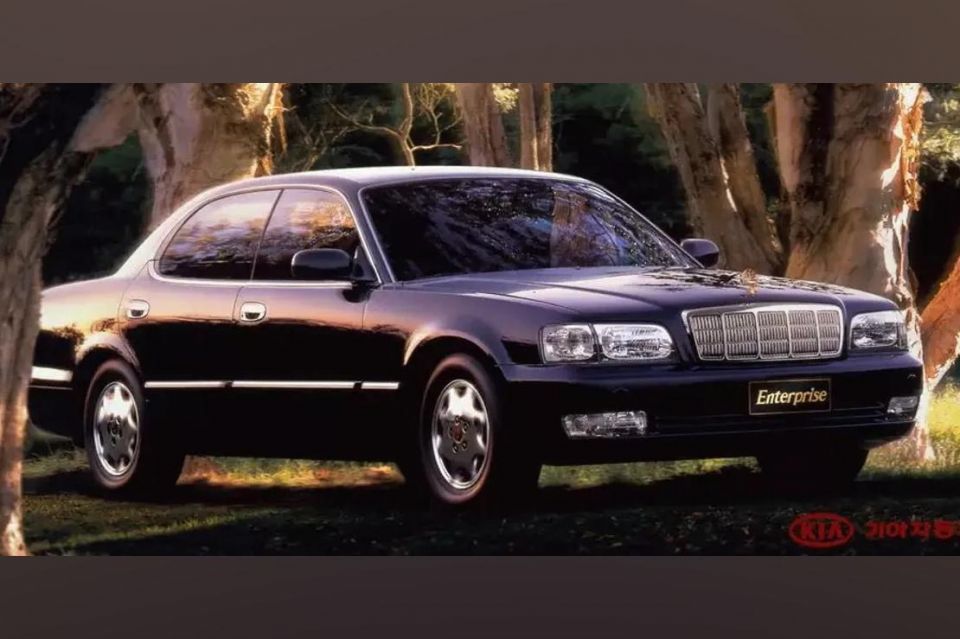
Mazda Australia pulled the plug on the 929 late in 1997, focusing instead on the Eunos 800 which was selling slightly better. The 929 lived on until 1999 in Japan as the Sentia, and then had another lease in life in Korea, where it was sold as the Kia Enterprise from 1998 to 2002.
The Enterprise slotted in above the Potentia, a restyled version of the 1986 Mazda 929/Luce. This model continued until 2002 but with Kia being taken over by Hyundai in 1998, both Mazda-based models’ days were numbered. Their replacement would be the Hyundai Grandeur-based Opirus.
The Eunos 800 nameplate may have been retired in 1999, but the car wasn’t dead yet.

In 2000 – six years after the Eunos 800’s introduction – Mazda introduced an updated version called the Millenia.
This was the nameplate the Eunos 800 had been sold under in markets like the US, with Mazda closing the book on the Eunos name; the marque had been retired in Japan in 1996, and ceased to be a standalone brand here the same year.
The Millenia continued to offer only the supercharged 2.3-litre Miller cycle V6, as well as standard four-wheel steering. There were no changes to the powertrain, though Mazda said it made improvements to the suspension, steering and brakes to aid dynamics.
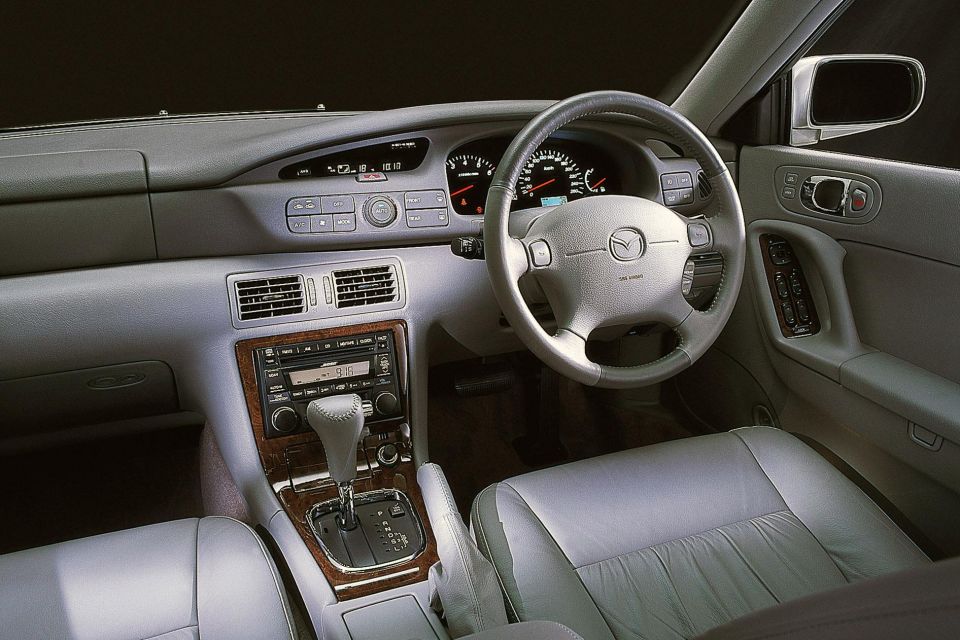
There was modified steering geometry, revised damper rates and reinforced suspension mountings, larger diameter brake rotors with high-performance pads, and extra body strengthening.
In addition to this raft of mechanical tweaks, the Millenia received a facelift. The rear and interior were only subtly changed, but the front end styling was noticeably different. The Eunos waterfall grille was replaced with one that had more of a Mazda corporate look to it, while there were also new headlights and a restyled front bumper and bonnet. The changes helped freshen up what was by then a fairly old design.
The Millenia also received a new 16-inch alloy wheel design in Dunlop SP Sport tyres, and measured 50mm longer overall than the Eunos 800.
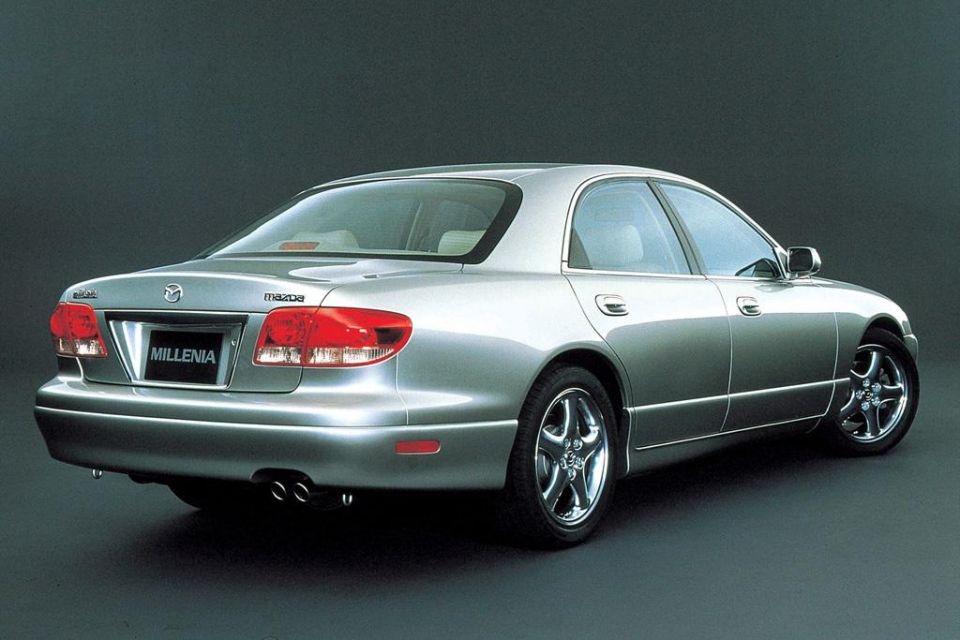
Pricing was largely unchanged – the single Millenia grade was priced at $71,250 before on-roads, and came standard with front and front-side airbags, a sunroof, power front seats, leather upholstery, and a nine-speaker Bose sound system with an in-dash six CD player.
That pricing saw it undercut the Lexus ES and Honda Legend by over $13,000, but the Millenia was still priced up against the likes of the Lexus IS300 and BMW 325i – admittedly smaller vehicles, but both more modern and prestigious.
The changes Mazda had made didn’t make a blip. Mazda sold 34 in 2000, though it arrived later in the year. But this tally increased to just 57 units in 2001, with Mazda shifting a further 11 in 2002. It pulled the plug on the Millenia that year.

The Millenia therefore only just cracked triple digits, and was even outsold by the slow-selling Legend each year.
There was no direct replacement for the Millenia, though its role at the top of the Mazda line-up was filled by the RX-8 in 2003.
In keeping this list to just 10 Mazdas, some vehicles had to stay on the cutting room floor. These included:
You can read more about the history of Eunos in Australia here.
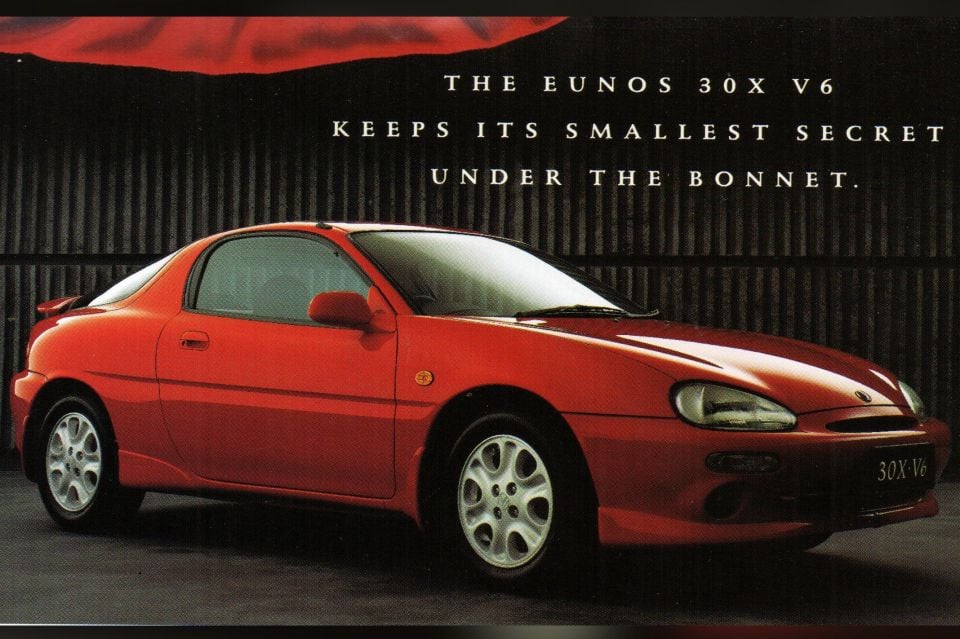
MORE: 10 Mazdas you may have forgotten about: Part 1 MORE: 10 Chryslers you may have forgotten about MORE: 10 Fords you may have forgotten about MORE: 10 Holdens you may have forgotten about MORE: 10 Nissan and Datsun vehicles you may have forgotten: Part I MORE: 10 Nissans you may have forgotten: Part II
Where expert car reviews meet expert car buying – CarExpert gives you trusted advice, personalised service and real savings on your next new car.
William Stopford is an automotive journalist with a passion for mainstream cars, automotive history and overseas auto markets.


Ben Zachariah
3 Hours Ago
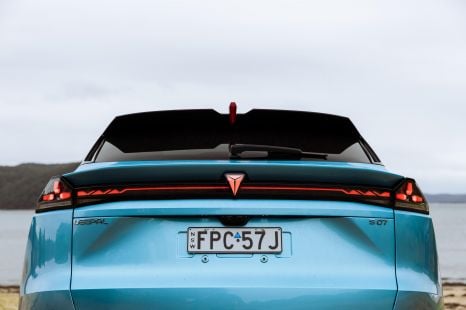

William Stopford
4 Hours Ago
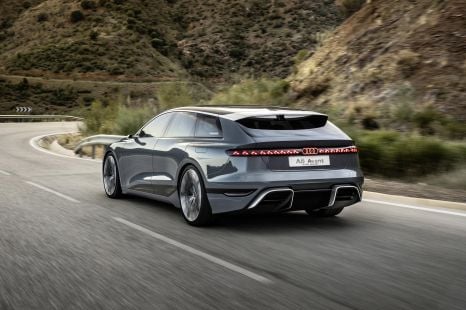

Derek Fung
5 Hours Ago


Alborz Fallah
5 Hours Ago
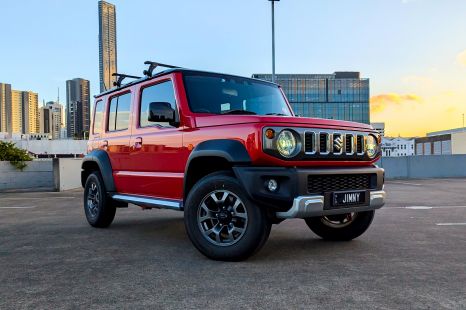

William Stopford
12 Hours Ago
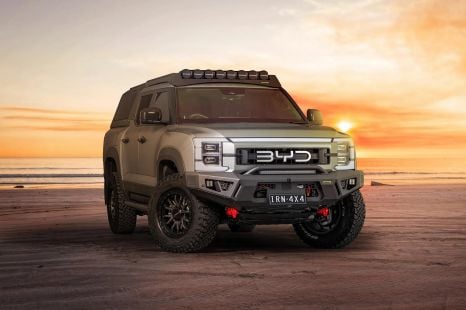

William Stopford
20 Hours Ago